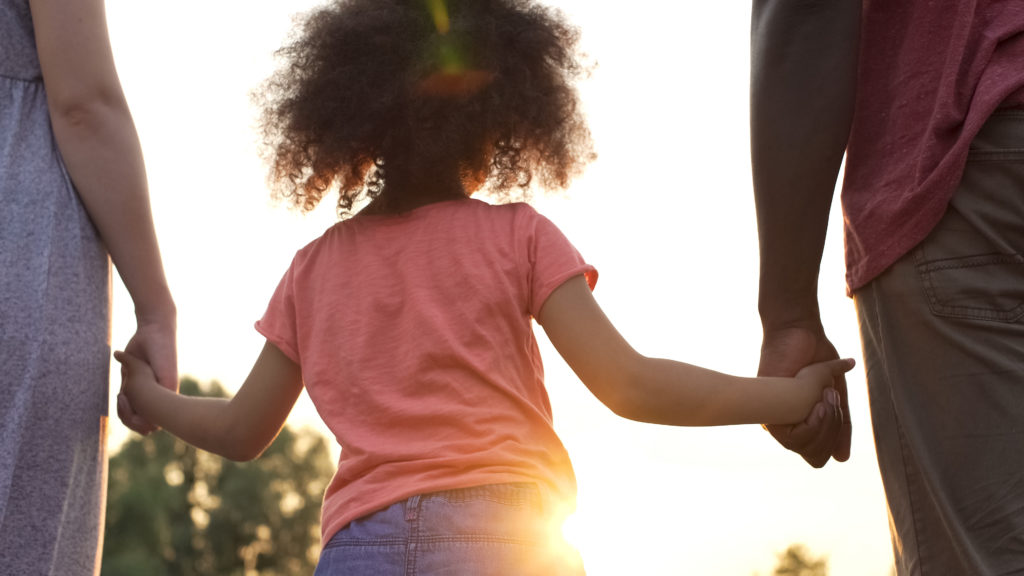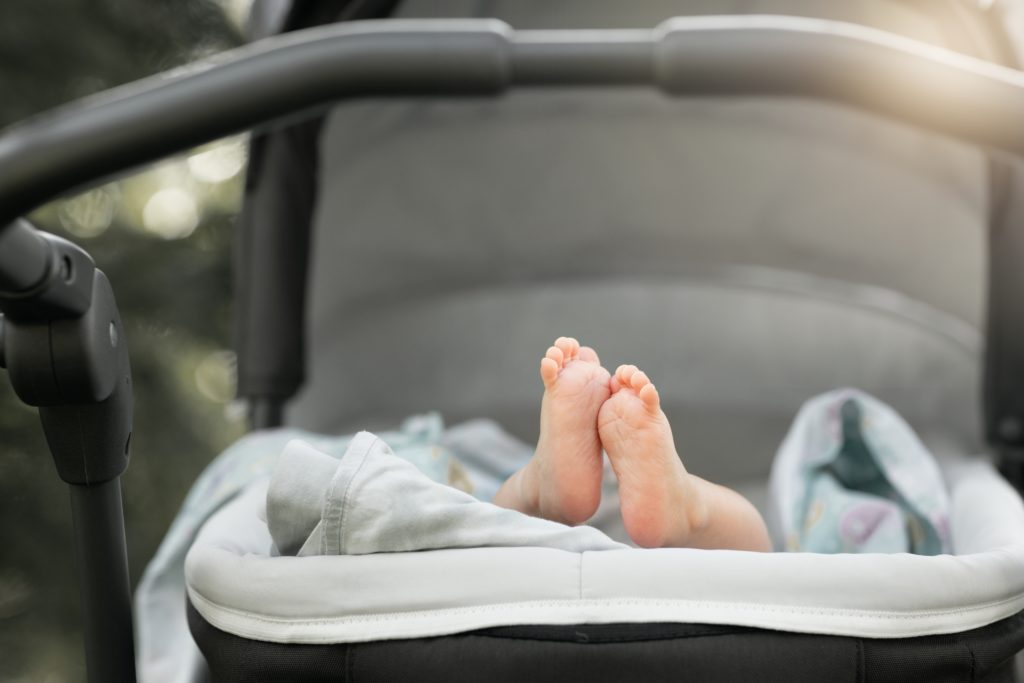Child adoption is a legal process where families assume permanent responsibility for children unable to remain with their birth parents, ensuring stable environments crucial for their development. Globally, over 260,000 children are adopted annually, with classifications including domestic and international adoptions.

Overview of child adoption
Adoption is a legal process in which a family permanently assumes the responsibility for raising a child who, due to circumstances such as abuse, neglect, or parental inability, cannot remain with their birth parents. The selection process involves finding families who can affirm a child’s identity, including aspects such as race, gender, ability, religion, and culture, and meet their needs. This process aims to provide children with a stable living environment, which is essential for their development (Adoption Council of Ontario, n.d.).
The overall aim of adoption is to promote the optimum development of a child under the preamble of the Convention on the Protection of Children and Co-operation in Respect of Intercountry Adoption hereunder the Hague Adoption Convention, which states that the child ‘for the full and harmonious development of his or her personality, should grow up in a family environment in an atmosphere of happiness, love and understanding’ (The Hague Conference on Private International Law, n.d.).
Since its inception in 1993, Protection of Children and Co-operation in Respect of Intercountry Adoption has been a cornerstone in advancing global adoption standards. This international treaty places primary emphasis on safeguarding the best interests of children. It mandates the establishment of central authorities in 106 participating countries to oversee adoption processes and rigorously prohibits practices such as abduction and trafficking (The Hague Conference on Private International Law, n.d.).
Adoption laws and policies
Adoption underwent significant developments in Europe and the United States in the aftermath of World War I when rising orphan numbers and increasing births outside marriage spurred legislative and societal responses. This period saw adoption gain prominence as a formalized process aimed at providing stable family environments for vulnerable children.
Post-World War II, international adoptions experienced a surge driven by global factors such as poverty, conflicts, natural disasters, and human rights concerns (Britannica, n.d.).
In cases where children are separated from their families and communities during armed conflict or natural disasters; family tracing should be the first priority and intercountry adoption should only be envisaged for a child once these tracing efforts have been unsuccessful.
The convention incorporates the subsidiarity principle, which is crucial in the context of international adoption. This principle parallels states’ rights in the United States and is fundamental in EU law, emphasizing that decisions should be made at the local level whenever possible.
In intercountry adoption, subsidiarity relates to the biological family’s priority and right to raise children. The Hague Adoption Convention has adopted this principle, making it a standard for all intercountry adoptions, even for countries not formally part of the convention (Turner, 2019).
The Hague Adoption Convention is designed to ensure ethical and transparent processes. This international legislation gives paramount consideration to the best interest of the child and provides the framework for the practical application of the principles regarding inter-country adoption contained in the Convention on the Rights of the Child under article 21(b) (UNICEF, n.d.).
Article 21 requires that States Parties ensure that children affected by inter-country adoption are provided with equivalent standards and safeguards to those applicable in national adoption. In addition, the Optional Protocol on the sale of children, child prostitution and child pornography, in Articles 3 and 5, requires States Parties to take measures to criminalize any act of improperly inducing consent for adoption as well as making any sort of trafficking in children an extraditable offense. It also demands that States Parties undertake measures to combat illegal practices (OHCHR, n.d.).
Types of adoption
Due to a lack of a universal framework, adoptions are categorized in various ways. Some professionals classify them as international or domestic, while others divide them into private and public adoptions, depending on legal and procedural differences (Embrace Families, n.d.).
Domestic adoption
Domestic adoption involves adopting a child residing within the same country as the adoptive parents. The adoption order legally establishes the child as the adoptive parents’ child, granting all rights and responsibilities of parent-child relationships. In most countries, adoption legislation applies exclusively to children under eighteen years old; adults cannot be adopted. Types of domestic adoption can include stepfamily adoption, extended family as well as relative adoption (The Adoption Authority of Ireland, n.d.).
Domestic adoption also includes long-term foster care that can lead to adoption. However, it’s important to differentiate between fostering and adoption, both of which aim to provide stable homes for vulnerable children. Foster care is typically temporary, ranging from days to years, with the state retaining legal responsibility. In contrast, adoption creates a permanent legal arrangement where adoptive parents assume full parental rights for the child (Five Rivers, n.d.).
Domestic adoption normally ranks high within the general hierarchy of options available as alternative care for children deprived of their family environment. The fact that domestic adoption is a national solution, a permanent placement, and in addition offers a family environment, puts it ahead of other alternative care options (Triseliotis et al., 2007).
The child welfare system poses significant challenges globally, with neglect frequently cited as the leading cause of children entering care. In the United States, one of the wealthiest nations, data from the KIDS COUNT Data Center reveals that over 600,000 children are in the welfare system due to maltreatment, primarily neglect (76%), followed by physical abuse (16%) and sexual abuse (9%). African-American youth, who make up 14% of the child population, are disproportionately represented at 23% in the foster care system in the country (Functional Family Therapy, n.d.).
Additionally, stepparent adoption occurs when the spouse of one biological parent adopts the child. This process is generally simpler and quicker than other forms of adoption, with fewer requirements such as background checks, especially if the child already lives with the stepparent. Consent from both biological parents is typically needed, and the non-custodial parent must relinquish their parental rights (Justia, n.d.).
According to the National Adoption Information Clearinghouse (NAIC, 2006), stepchild adoption, involving the legal adoption of stepchildren by their stepparents, is the most prevalent form of adoption in the United States, Great Britain, and Ireland. However, findings from Susan D. Stewart at the Department of Sociology, Iowa State University, suggest that adopted stepchildren in two-parent households face an elevated risk of behavioral and emotional problems (Stewart, n.d.).
International adoption

Adoption raises significant human rights issues, especially in intercountry contexts where debates center around children’s well-being in institutional settings versus the risks of illegal and unethical adoption practices. It is emphasized that adoption should be viewed as part of a broader spectrum of child protection measures, considered only when keeping the child with their family is not feasible and consistent with the best interests of the child. Efforts should prioritize stable, family-based care within the child’s country of origin before considering adoption abroad (European Parliament, 2016).
Since 2009, European countries like Spain, France, and Italy, along with Sweden, have consistently ranked among the top destinations for intercountry adoption, surpassing the United States. Conversely, intercountry adoptions from EU Member States in central and eastern Europe, which were significant senders in the 1990s, have declined in recent years. China and Russia remain prominent countries of origin for adopted children, although there has been a notable increase in adoptions from Africa (European Parliament, 2016).
The issue of international child adoptions, particularly in Africa involving Western nationals, is igniting contentious debates, focusing attention on concerns about potential child trafficking. Critics argue that certain adoption practices might inadvertently enable trafficking, while proponents emphasize the humanitarian benefits of offering homes to orphaned children who often face grim futures in institutional settings (Mushinge, 2023).
Global adoption statistics and trends
The United Nations Population Division estimates around 260,000 children are adopted annually. This equates to fewer than 12 adoptions per 100,000 individuals under the age of 18, indicating that adoption is relatively rare. Moreover, the majority of these adoptions have been concentrated in select nations, notably the United States, China, and Russia (United Nations, 2010).
In the United States, approximately 4.5 million children are adopted, constituting about 7% of the population according to the 2010 Census, which includes both non-relative and stepparent adoptions. According to the Adoption by the Numbers 2022 study by the National Council on Adoption, around 115,353 adoptions occurred in 2019 (Adoption Network, n.d.).
The right to non-discrimination also imposes a requirement for equal treatment of children within domestic adoptions, whether placed within or outside their kinship networks. It is paramount to ensure that discriminatory practices towards certain groups of children, for example, Roma children, those with severe disabilities or, in certain cases, boys, being denied opportunities for adoption (United Nations, 2006).
Patterns in international adoption
The African Child Policy Forum reported a nearly 400% increase in international adoptions from 2004 to 2012. As a result, more than 41,000 African children have been adopted and taken out of their home countries. Notably, in 2009 and 2010, over two-thirds of these adoptions were from Ethiopia, which has some of the most lenient adoption rules and continues to send more children abroad for adoption than any other African country (BBC, 2012).
Most African children are adopted by American families, with Western Europe and Canada also participating. Major changes in adoption laws in countries like China, South Korea, and Guatemala—where adoption eligibility has been tightened and domestic adoption encouraged—have led to a shortage of adoptable children. This has raised concerns among child welfare experts, as international law recommends inter-country adoption as a last resort, making the rise in adoptions of African children abroad troubling (BBC, 2012).
International adoption patterns have shifted significantly over the years, including in Asia and Europe. Historically, China was the largest source of internationally adopted children, accounting for about 60,000 children, or 29% of all international adoptions, and 57% of those from Asia. However, since the 1990s, this trend has changed (Kreider, 2014).
Between 2009 and 2011, South Korea emerged as a significant source, with 23% of adopted children from Asia born there. In Europe, Russia has been the leading source, contributing 73% of internationally adopted children under 18. For children aged 6 to 17, at least 20% were from Russia, though only 12% of children under 6 were adopted from there (Kreider, 2014).
Coping with emotional impact: children’s support system

Adoption is a transformative journey that brings joy and fulfillment to both the child and the adoptive family. However, it can also trigger feelings of grief and loss for adoptees, despite finding a loving home. Many face challenges such as loss, rejection, and identity issues, needing support and understanding from their families. This struggle is often intensified for international adoptees adapting to new countries and cultures, affecting their self-esteem and sense of belonging (Children’s Bureau of South Carolina, 2024).
To optimize the adoption process, enhancing collaboration between community organizations and government agencies is crucial. This partnership ensures comprehensive support through services such as foster care, family therapy, parenting classes and mental health care. Regular monitoring of child welfare data also helps tailor policies and practices to better meet the needs of families and children, improving overall outcomes in adoption and child welfare (Functional Family Therapy, n.d.).
Written by Lidija Misic
Internally proofread by Aditi Partha
Last revised on August 16, 2024
Bibliography:
Adoption Council of Ontario (n.d.), What is Adoption? Retrieved from ACO at https://adoption.on.ca/ci/adoption-basics/what-is-adoption/, accessed on June 28, 2024.
Adoption Network (n.d.), US Adoption Statistics. Retrieved from Adoption Network at https://adoptionnetwork.com/adoption-myths-facts/domestic-us-statistics/, accessed on June 28, 2024.
BBC (2012), Adoption from Africa: Concern over ‘dramatic rise’. Retrieved from BBC at https://www.bbc.com/news/world-africa-18248007#:~:text=More%20than%2041%2C000%20African%20children,other%20country%2C%20apart%20from%20China., accessed on August 5, 2024.
Britannica (n.d.), Adoption. Retrieved from Britannica at https://www.britannica.com/topic/adoption-kinship, accessed on June 28, 2024.
Children’s Bureau of South Carolina (2024), Psychological Effects of Being Adopted on Child Development. Retrieved from Children’s Bureau of South Carolina at https://www.all4kids.org/news/blog/effects-of-adoption-on-child-development/, accessed on June 30, 2024.
Embrace Families (n.d.), The 5 Types of US Adoption. Retrieved from Embrace Families at https://embracefamilies.org/the-5-types-of-us-adoption, accessed on June 28, 2024.
European Parliament (2016), Adoption of Children in the European Union. Retrieved from European Parliament at https://www.europarl.europa.eu/RegData/etudes/BRIE/2016/583860/EPRS_BRI(2016)583860_EN.pdf, accessed on June 28, 2024.
Five Rivers (n.d.), What’s the difference between fostering and adoption? And is foster care the same as adoption? Retrieved from Five Rivers at https://five-rivers.org/news/is-foster-care-the-same-as-adoption/, accessed on June 28, 2024.
Functional Family Therapy (n.d.), Alarming Foster Care Statistics That Cannot Be Ignored. Retrieved from FFT at https://www.fftllc.com/blog/alarming-foster-care-statistics, accessed on June 28, 2024.
Garner, B. A. (2004). Black’s Law Dictionary (8th Edition). USA: Thomson West Publishing Co. Retrieved from Scientific Research Publishing at https://www.scirp.org/reference/referencespapers?referenceid=2435433, accessed on August 16, 2024.
Justia (n.d.), Stepparent Adoption Laws & Procedures. Retrieved from Justia at https://www.justia.com/family/adoptions/who-may-adopt/adoption-by-family-members/stepparent-adoption/, accessed on June 28, 2024.
Kreider M. Rose (2014), About Half of Internationally Adopted Children were Born in Asia. Retrieved from the United States Census Bureau at https://www.census.gov/newsroom/blogs/random-samplings/2014/04/about-half-of-internationally-adopted-children-were-born-in-asia.html, accessed on August 5, 2024.
Mushinge Glory (2023), The murky world of foreign child adoption in Africa. Retrieved from Deutsche Welle at https://www.dw.com/en/the-murky-world-of-foreign-child-adoption-in-africa/a-64462543, accessed on June 28, 2024.
National Council for Adoption (n.d.), Important Adoption Laws. Retrieved from NCFA at https://adoptioncouncil.org/resources-and-training/important-adoption-laws/, accessed on June 28, 2024.
OHCHR (n.d.), Convention on the Rights of the Child. Retrieved from UNHR at https://www.ohchr.org/en/instruments-mechanisms/instruments/convention-rights-child, accessed on August 16, 2024.
Stewart Susan (n.d.), Stepchildren Adopted by their Stepparents: Where do they fit? Retrieved from Population Association of America at https://paa2007.populationassociation.org/papers/71568, accessed on June 28, 2024.
The Adoption Authority of Ireland (n.d.), Domestic Adoption. Retrieved from The Adoption Authority of Ireland at https://aai.gov.ie/en/who-we-are/domestic-adoption.html, accessed on June 28, 2024.
The Hague Conference on Private International Law (n.d.), 33: Convention of 29 May 1993 on Protection of Children and Co-operation in Respect of Intercountry Adoption. Retrieved from HCCH at https://www.hcch.net/en/instruments/conventions/full-text/?cid=69, accessed on June 28, 2024.
Triseliotis P. John et al. (1997), Adoption: Theory, Policy and Practice, UNKNO.
Turner Chad (2019), Subsidiarity Made Simple: Understanding the Hague Convention’s Subsidiarity Principle. Retrieved from NCFA at https://adoptioncouncil.org/publications/adoption-advocate-127/, accessed on June 30, 2024.
UNICEF (n.d.), Intercountry adoption. Retrieved from UNICEF at https://www.unicef.org/media/intercountry-adoption, accessed on August 16, 2024.
United Nations (2006), Consideration of reports submitted by States parties under article 44 of the Convention : Convention on the Rights of the Child : concluding observations : Hungary. Retrieved from UN at https://digitallibrary.un.org/record/575773?ln=en&v=pdf, accessed on August 16, 2024.
United Nations (2010), Child Adoption: Trends and Policies. Retrieved from UN at https://www.un.org/en/development/desa/population/publications/pdf/policy/child-adoption.pdf, accessed on June 28, 2024.

